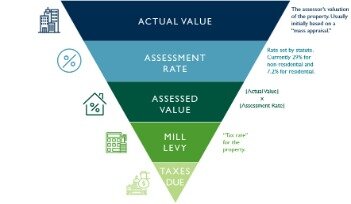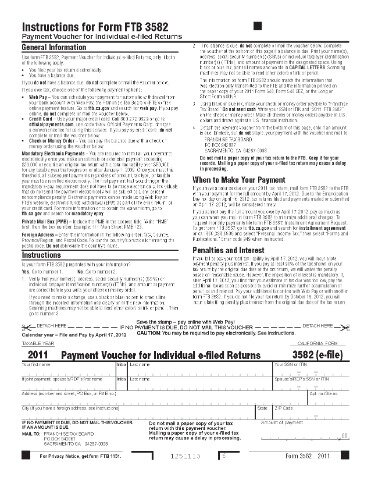Contents:


However, the present value table is normally given in exams and you can use it to derive the discounted values for different discount rates. Jim estimates that the new buffing wheel will save 10 labor hours a week. Thus, at $250 a week, the buffer will have generated enough income to pay for itself in 40 weeks.
After-tax cash flows are taken into consideration only for the calculation of payback periods. Now, go through the steps below carefully to Calculate Payback Period in Excel. The method does not take into account the time value of money, where cash generated in later periods is worth less than cash earned in the current period. A variation on the payback period formula, known as the discounted payback formula, eliminates this concern by incorporating the time value of money into the calculation.
STEP 8: Insert Excel Chart to Get Payback Period
The longer the projects go, the less likely they are to be accurate. Under payback method, an investment project is accepted or rejected on the basis of payback period. Payback period means the period of time that a project requires to recover the money invested in it. The Payback Period Calculator can calculate payback periods, discounted payback periods, average returns, and schedules of investments. As the equation above shows, the payback period calculation is a simple one. It does not account for the time value of money, the effects of inflation, or the complexity of investments that may have unequal cash flow over time.
- While you know up front you’ll save a lot of money by purchasing a building, you’ll also want to know how long it will take to recoup your initial investment.
- Use Excel’s present value formula to calculate the present value of cash flows.
- A small deviation made in labor cost or cost of maintenance can change the earnings and the payback period.
- For the most thorough, balanced look into a project’s risk vs. reward, investors should combine a variety of these models.
- Simply put, it is the length of time an investment reaches a breakeven point.
These include white papers, government data, original reporting, and interviews with industry experts. We also reference original research from other reputable publishers where appropriate. You can learn more about the standards we follow in producing accurate, unbiased content in oureditorial policy. Full BioAmy is an ACA and the CEO and founder of OnPoint Learning, a financial training company delivering training to financial professionals. She has nearly two decades of experience in the financial industry and as a financial instructor for industry professionals and individuals.
Also, the payback period does not assess the riskiness of the project. Projecting a break-even time in years means little if the after-tax cash flow estimates don’t materialize. The amount of capital investment is overlooked in payback period so, during capital budgeting decision, several other methods are also required to be implemented. Within several methods of capital budgeting payback period method is the simplest form of calculating the viability of a particular project and hence reduces cost, labor and time.
Step by Step Procedures to Calculate Payback Period in Excel
If you’re using the wrong credit or debit card, it could be costing you serious money. Our experts love this top pick, which features a 0% intro APR until 2024, an insane cash back rate of up to 5%, and all somehow for no annual fee. The appeal of this method is that it’s easy to understand and relatively simple to calculate.

The payback period is a basic understanding of the return and time period required for break even. The payback period formula is very basic and easy to understand for most of the business organization. One of the major characteristics of the payback period is that it ignores the value of money over the time period. The payback Period formula just calculates the number of years which will take to recover the invested funds from the particular business.
Therefore, the cumulative cash flow balance in year 1 equals the negative balance from year 0 plus the present value of cash flows from year 1. Identify the last year in which the cumulative balance was negative. Let us now take a step further and have a look at the advanced calculations of the payback period. Though the simple payback period is easy to calculate, the discounted payback period takes into account the time value of each cash inflow and outflow. Payback period, which is used most often in capital budgeting, is the period of time required to reach the break-even point of an investment based on cash flow.
Alternatives to the payback period calculation
There are several types of payback period which are used during the calculation of break-even in business. The net present value of the NPV method is one of the common processes of calculating the payback period, which calculates the future earnings at the present value. The discounted payback period is a capital budgeting procedure which is frequently used to calculate the profitability of a project. The net present value aspect of a discounted payback period does not exist in a payback period in which the gross inflow of future cash flow is not discounted.
Calculate Your Solar Panel Payback Period (How Long To Recoup … – EcoWatch
Calculate Your Solar Panel Payback Period (How Long To Recoup ….
Posted: Wed, 18 May 2022 16:26:53 GMT [source]
Multiply this percentage by 365 and you will arrive at the number of days it will take for the project or investment to earn enough cash to pay for itself. Management uses the payback period calculation to decide what investments or projects to pursue. “Payback tells you when you will get your initial investment back, but it doesn’t take into account the fact that you don’t have your money for all that time,” he says. For that reason, net present value is often the preferred method.
Payback period is most suitable in dynamic markets and under certain investment scenario. A small deviation made in labor cost or cost of maintenance can change the earnings and the payback period. From equities, fixed income to derivatives, the CMSA certification bridges the gap from where you are now to where you want to be — a world-class capital markets analyst.
We can perform numerous operations on our datasets using excel tools and features. There are many default Excel Functions that we can use to create formulas. Many banks and other financial institutions use excel files to store important data. They need to calculate various outputs and it’s easier to do that in excel.
The shorter the payback period, the more attractive the investment would be, because this means it would take less time to break even. The payback period is the amount of time it would take for an investor to recover a project’s initial cost. It’s closely related to the break-even point of an investment.
Simple & Discounted Payback Period
It may be the deciding factor in whether you should go ahead with the purchase of that big-ticket asset, or hold off until your cash flow is better. Small businesses in particular can benefit from payback analysis simply by calculating the payback period of any investment they’re considering. The formula is too simplistic to account for the multitude of cash flows that actually arise with a capital investment. For example, cash investments may be required at several stages, such as cash outlays for periodic upgrades. Also, cash outflows may change significantly over time, varying with customer demand and the amount of competition. The payback period is calculated by dividing the initial capital outlay of an investment by the annual cash flow.

Inflows are any items that go into the investment, such as deposits, dividends, or earnings. Cash outflows include any fees or charges that are subtracted from the balance. The payback period is the length of time it takes to recover the cost of an investment or the length of time an investor needs to reach a breakeven point.
Advantages and Disadvantages of the Payback Period
The COUNTIF function counts the number of years where the net cash flow is negative. Financial analysis is the process of assessing specific entities to determine their suitability for investment. Yarilet Perez is an experienced multimedia journalist and fact-checker with a Master of Science in Journalism. She has worked in multiple cities covering breaking news, politics, education, and more. Her expertise is in personal finance and investing, and real estate. Hence, the payback period of the project is 4 years and 5 months.

However, there are additional considerations that should be taken into account when performing the capital budgeting process. Account and fund managers use the payback period to determine whether to go through with an investment. For the most thorough, balanced look into a project’s risk vs. reward, investors should combine a variety of these models. For example, if the building was purchased mid-year, the first year’s cash flow would be $36,000, while subsequent years would be $72,000. We’ll explain what the payback period is and provide you with the formula for calculating it. Assume Jim’s Body Shop has $10,000 to invest into new equipment.
The main advantage of the payback period for evaluating projects is its simplicity. After you’re finished with the calculations, create your final table with the results. This method cannot determine erratic earnings and perhaps this is the main shortcoming of this method as we all know business environment cannot be the same for each and every year. This method only concentrates on the earnings of the company and ignores capital wastage and several other factors like inflation depreciation etc. This method totally ignores the solvency II the liquidity of the business. Companies which have lower cash balances in the balance sheet and has hired date and very weak and liquidity would be beneficial from this kind of method.
This type of analysis allows firms to compare alternative investment opportunities and decide on a project that returns its investment in the shortest time if that criteria is important to them. Others like to use it as an additional point of reference in a capital budgeting decision framework. There are some clear advantages and disadvantages of payback period calculations. It focuses on how quickly the project recovers its initial investment rather than looking at the whole potential of the project. As you can see, the first year’s discounted value for 8% is 0.926 that we calculated using the expression above.
Energy conservation advocates say rule won’t help Florida consumers – Palm Beach Post
Energy conservation advocates say rule won’t help Florida consumers.
Posted: Wed, 21 Dec 2022 08:00:00 GMT [source]
The other outstanding checks would have a payback period of 4.25 years but would generate higher returns on investment than the first project. However, based solely on the payback period, the firm would select the first project over this alternative. The implications of this are that firms may choose investments with shorter payback periods at the expense of profitability.
- Without considering the time value of money, it is difficult or impossible to determine which project is worth considering.
- Note that the payback calculation uses cash flows, not net income.
- One project might be paid back faster, but – in the long run – that doesn’t necessarily make it more profitable than the second.
- The resulting number is expressed in years or fractions of years.
- On the other hand, payback period calculations can be so quick and easy that they’re overly simplistic.
Remember that the initial investment is actually an expense, so it should be considered a negative value in this step. We obtain the break-even point of a project when the net cash flows exceed the initial investment. An investment project with a short payback period promises a quick inflow of cash. It is therefore, a useful capital budgeting method for cash poor firms.
This approach works best when cash flows are expected to be steady in subsequent years. Cash flow is the inflow and outflow of cash or cash-equivalents of a project, an individual, an organization, or other entities. Positive cash flow that occurs during a period, such as revenue or accounts receivable means an increase in liquid assets.